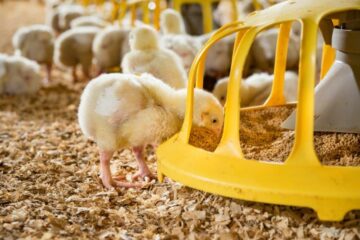Antibiotic Stewardship: What it really means
We hear a lot about antibiotic resistance and calls for antibiotic stewardship these days, and rightly so. It’s a concern I share as a mother of three great kids and as a veterinarian with over 20 years of experience. After being asked by several people what antibiotic stewardship really means, I decided to create a video about it and tackle the topic in a post.
To explain it, let’s start with some context. More than 50 years ago, a study in the Journal of the American Medical Association showed that 50 percent of antibiotic use in people was either unnecessary or inappropriate. For example, we know doctors are sometimes pressured to prescribe antibiotics even if the affliction is caused by a virus, not bacteria. Remember, antibiotics don’t work against viruses.
In agriculture, antibiotics are used to treat animals for the same reason they are used to treat people, to prevent or lessen pain and suffering caused by bacterial illness. And just as with medical doctors, veterinarians must guard against prescribing antibiotics if unneeded. This careful attention to using antibiotics only when needed is a key part of antibiotic stewardship. So what else does that term mean? Let’s unpack it.
Think of antibiotic stewardship as a master plan – or coordinated strategies to simultaneously prevent or manage disease and reduce resistance to antibiotics. Stewardship is needed on the human health side – in hospitals, doctors’ offices and nursing homes – as well as the animal health side – on farms and in veterinary clinics where you take your pets – for the concept to be successful. When we all work together, we learn from one another and are able to strengthen best practices for everyone.
Another aspect of antibiotic stewardship is attention to which antibiotics are used. Not all antibiotics are created equal, so the World Health Organization (WHO) created a list of all antibiotics used for human medicine, classifying them based on their importance to human health – critically important, highly important and important. When you hear the term “medically important”, it means that the antibiotic appears on the WHO list and is just as the name suggests – important to human health. The list is intended to optimize the use of antibiotics and assist in managing antibiotic resistance, ensuring that all antibiotics, especially critically important antibiotics, are used responsibly both in human and veterinary medicine. A class of antibiotics commonly used in agriculture, called ionophores, are not used to treat people at all and therefore are not on the WHO list.
A similar document, put together by the World Organisation for Animal Health, lists and categorizes antibiotics that are important to the health and welfare of animals. The overlap between the critical lists for human and veterinary medicine is intended to help strike an appropriate balance between public health and animal health needs.
U.S. agriculture (including farmers, veterinarians and the animal health community) took a bold step by eliminating in 2017 the use of medically important antibiotics to promote the growth of animals. At the same time, veterinarian oversight of medically important antibiotics was increased. So, both the agriculture and medical communities are paying attention to the classification of antibiotics as part of a commitment to stewardship.
The American Veterinary Medical Association has a list of core principles for antibiotic stewardship. The pork industry’s stewardship plan involves farmers working closely with their veterinarians to protect pig health and reduce the need for antibiotics. Pork producers also fund research to ensure on-farm best practices for antibiotic use continue to improve. Beef farmers have similar strategies in a 14-point guide for judicious antibiotic use. Chicken farmers tout a 47 percent decrease in sales of medically important antibiotics between 2016 and 2017. I could go on. If you combine these efforts, a clear picture emerges of a group of people committed to responsibly using antibiotics.
The picture would be incomplete if I failed to acknowledge that we have much to learn about the source and cause of antibiotic resistance. Researchers are working diligently to answer all the questions. In the meantime, both animal and human health experts do the best we can, based on the information we have.
The shared goal is to ensure we use as little as possible yet keep antibiotics available when needed to responsibly protect both human and animal health. As a veterinarian who took an oath to protect animal health, I know that antibiotics are sometimes the only option to relieve animal suffering, and treating sick animals is the ethical thing to do.
So, antibiotic stewardship is about more than a reduction in need. It’s about ensuring wise and carefully prescribed use of antibiotics.
Questions? Please feel free to send me an email at AskDrDorman@pahc.com or call me at 844-288-3623. You can also browse our Resource Library to learn more.

